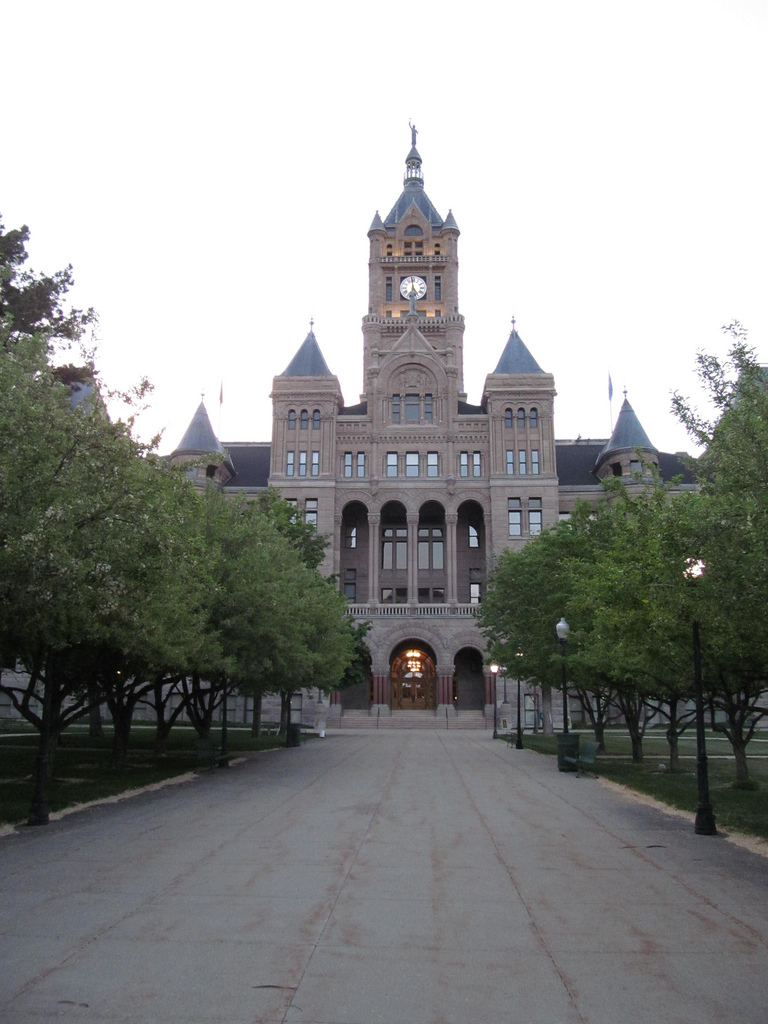| You might say Salt Lake City had its chance. Developing the city’s northwest quadrant, an area west of the international airport, has been a long-time dream of city leaders trying to deal with a housing affordability problem. The city is hemmed in on three sides by mountains and boundaries. Homes in its wealthier neighborhoods keep appreciating, while middle-income families choose to buy in the suburbs and commute. The northwest quadrant, raw desert land, has sat for decades like a veritable Oz on the horizon, shining with promise. “This,” former Mayor Palmer DePaulis said in 1988, pointing west of the airport, “is where we believe the future of Salt Lake City will be.” But in the intervening 30 years, the city did nothing to make that future happen. It lacked the resources |
| | to bring the sewer lines, water, electricity and other infrastructure to make development possible — that is, until the state decided to move the prison there. Then the focused changed to industry and commerce. But now? If SB234 becomes law, a new Utah Inland Port Authority would have power to develop an inland port in the northwest quadrant — something that could end up swallowing much of it, including about 3,000 acres the city has been actively planning. Salt Lake City would have three seats on that nine-member board. The state would have four. Salt Lake County and the Permanent Community Impact Fund Board each would get one. The mayor is furious. She says the bill would take away the city’s control over land-use decisions in the area. Having a minority stake in a governing authority simply isn’t enough. But the bill’s sponsor, Sen. Jerry Stevenson, R-Layton, counters by saying the concept of an inland port “is much larger than any of us, and it’s going to take a lot of cooperation to get this done.” Politics, to a large extent, is an exercise in predicting the future. Office holders constantly make decisions with an eye toward short-term gains, getting them a step closer to re-election. If they really care about public service, they also keep an eye on long-term results. As someone who sat through meetings 30 years ago when Utah lawmakers gambled state money on cold fusion, I know those long-term predictions can be imperfect, at best. All these years later, it turns out Utah isn’t the global capital of an endless and powerful futuristic energy source, after all. But now we try to peer into the future and imagine whether, 30 years from now, the Wasatch Front will be a major inland port — a distribution center that not only embodies the 21st century shop-online economy but also is riding a burgeoning wave toward prosperity. Your guess is as good as mine, but it would be hard to imagine a better location for such a port. If you’re unsure on the subject, an inland port, like a traditional one along a seaboard, is a collection of warehouses and companies that accept goods from manufacturers and distribute them through various shipping lanes. Several of them are springing up nationwide, driven by demand. The northwest quadrant is an ideal location because it contains a major international airport, rail lines and an interstate highway that connects the east and west coasts. History teaches we ought to take the boundless optimism of proponents and ratchet it down a couple of notches, just as we should discount the dire warnings of opponents by a step or two. The port sounds like a good idea, but state lawmakers ought to make a better effort to assuage some of the city’s concerns. Conservative lawmakers can’t completely ignore their long-held philosophy that enshrines the pre-eminent value of empowering governments closest to the people. The state undoubtedly will use tax incentives to lure companies to the port, a tactic studies have shown needs to be carefully monitored to ensure taxpayers actually benefit. But it’s safe to say DePaulis’ dream, reiterated in various forms by the mayors who followed him, will be lost to a prison and a port. Time will tell whether that’s a good thing. |


 RSS Feed
RSS Feed

